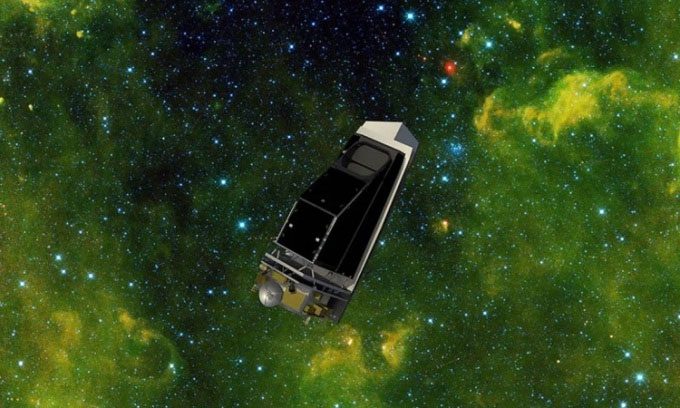NASA has officially begun the construction of a new generation asteroid-hunting observatory named NEOWISE, which specializes in observing in infrared wavelengths.
The Near-Earth Object Surveyor (NEO Surveyor) by NASA is designed to search for hard-to-detect asteroids and comets that may enter the vicinity of Earth’s orbit, as reported by Interesting Engineering on December 23rd. According to NASA, the system recently passed technical and program assessments. This mission is progressing toward its final design and production phase.

Design of the NEO Surveyor Observatory. (Photo: NASA).
“NEO Surveyor represents the next generation of NASA observatories aimed at quickly detecting, tracking, and characterizing near-Earth objects that could pose a threat,” said Lindley Johnson, an official at NASA’s Planetary Defense Coordination Office (PDCO). “While ground-based telescopes remain essential for observing the sky, the infrared space observatory is the optimal system that allows NASA to implement a planetary defense strategy.”
According to NASA, at least 90% of near-Earth objects larger than 140 meters pass within 48 million kilometers of Earth’s orbit. If they were to collide with Earth, such large objects could cause significant regional damage.
The NEO Surveyor, operated by NASA’s Jet Propulsion Laboratory in Southern California, will travel 1.6 million kilometers to the L1 Lagrange Point, a gravitationally stable area between Earth and the Sun, by 2028. There, the observatory will orbit in a 5-year mission. NEO Surveyor will observe the Solar System from this position using infrared light that is invisible to the human eye. Larger ground-based observatories may miss near-Earth objects due to certain wavelengths being blocked by Earth’s atmosphere. In contrast, NEO Surveyor can detect them by utilizing a light-collecting angle of up to 50 centimeters.
The most elusive near-Earth objects, such as dark asteroids and comets that do not reflect much visible light, can be tracked using NEO Surveyor’s advanced detection equipment, which observes in two thermally sensitive infrared bands. Such objects become visible due to sunlight heating them, and NEO Surveyor is highly sensitive to infrared wavelengths.
NEO Surveyor can also search for Trojan asteroids heading towards Earth in the direction of the Sun. The mission will characterize the composition, shape, rotation, and orbit of near-Earth objects. The primary mission of NEO Surveyor is planetary protection. However, the data gathered may also be used to learn more about the origins and evolutionary processes of asteroids and comets.
NEO Surveyor is built upon the achievements of its predecessor, the Near-Earth Object Wide-field Infrared Survey Explorer (NEOWISE). NEO Surveyor is the first satellite project aimed at exploring numerous hazardous asteroids and comets.


















































